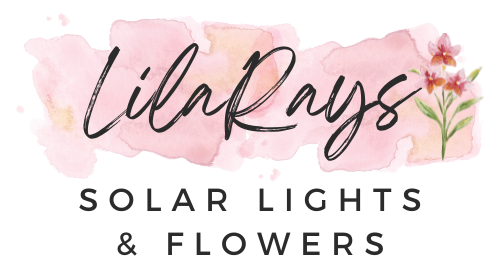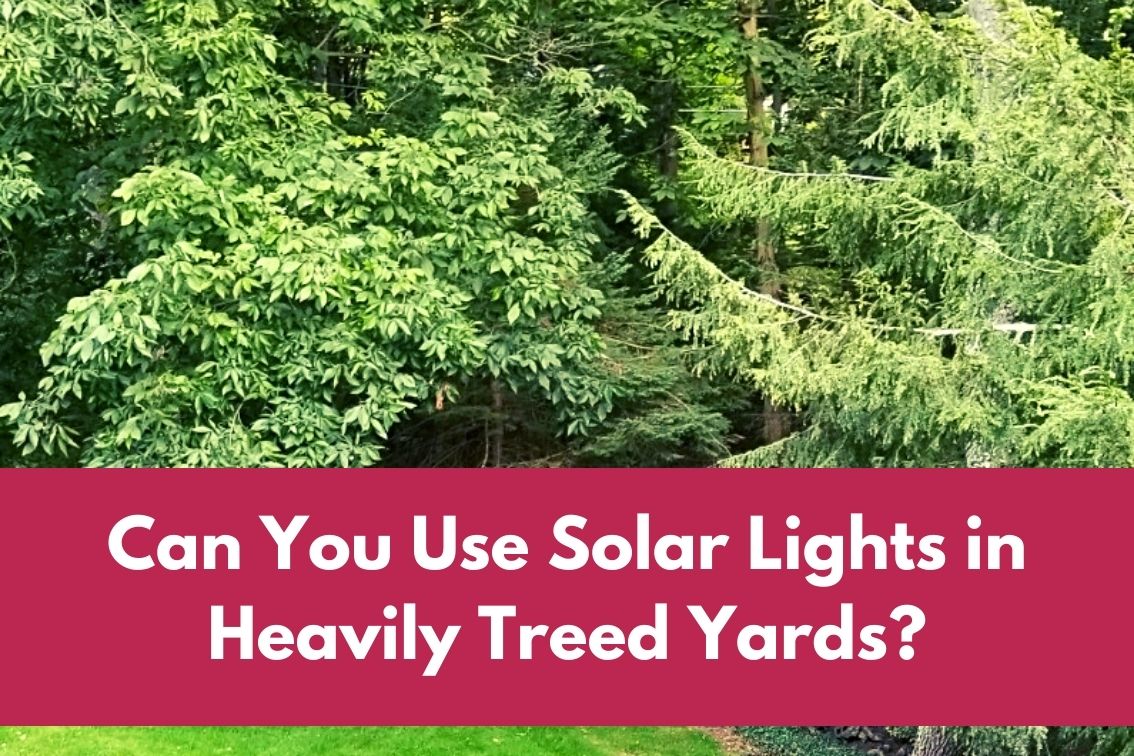*This post may contain affiliate links for which I earn commissions.*
Can you use solar lights in heavily treed yards? My parents’ house is proof that, yes, you can.
My parents live in on a 2 acre piece of property that is densely packed with pine trees, oaks, and weeping willow.
When I texted my dad a picture of the new path lights I was using in my sunlit-filled yard just outside Phoenix I was surprised by his response that they were similar to the new ones they’d just put in.
Knowing how much shade was in their yard I couldn’t imagine how they would be able to use lights that require at least six hours of sun in order to gain enough power to last through the night.
So, during a recent visit to see my parents in Pennsylvania I scouted out their property watching throughout the day to see how the sun moved overhead.
First, most houses do not have trees up close to the actual home’s foundation. You might have bushes or small trees but most people keep those things closely trimmed because you don’t want the tree branches near your roof or siding as that could lead to bugs getting in the house.
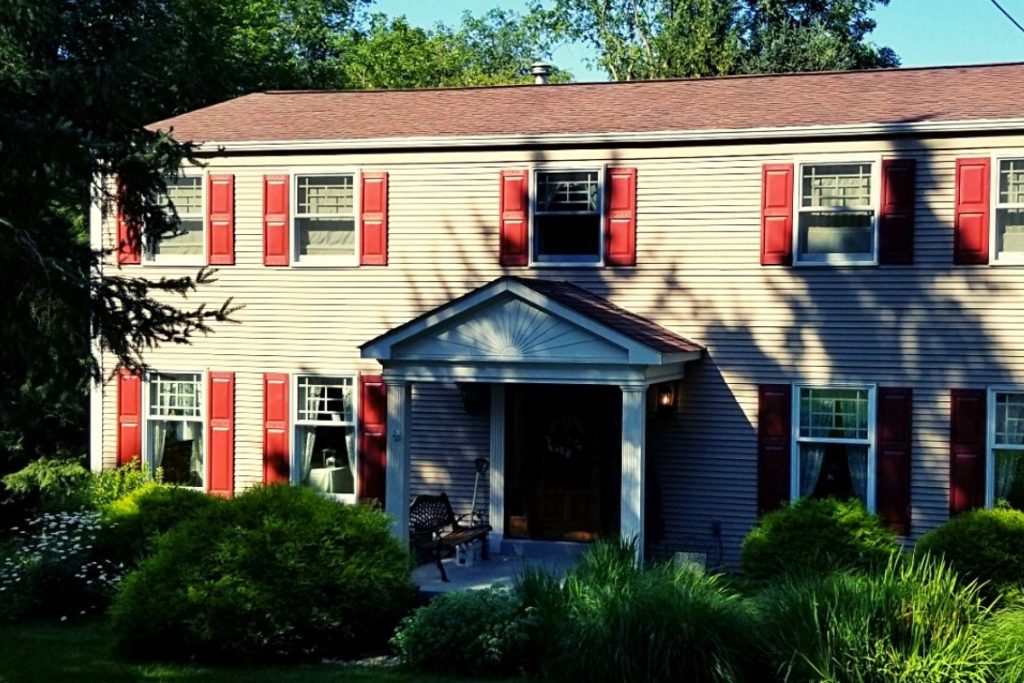
As long as that’s the case you likely have space closer to your house where you get more sunlight than you think and this presents opportunities for using solar lights.
The image above is the front view of their house and while it shows a ton of shade in this shot, the sun hits this spot from the early morning until just after noon giving them plenty of light for entry lights than line the walkway to their front door.
Second, most locations – even some of the rainiest places like Portland and Seattle – will get stretches of sunlight throughout the day or enough days a year to still make this kind of lighting a suitable investment for backyard landscaping.
Watch the Sun
If you live in a heavily wooded area and want to know whether or not solar lights will work for you I suggest running a few simple tests ahead of time.
You want to first identify where you’d put such lighting and then watch how the sun hits that spot (or spots) throughout the day on a day where you have full sun.
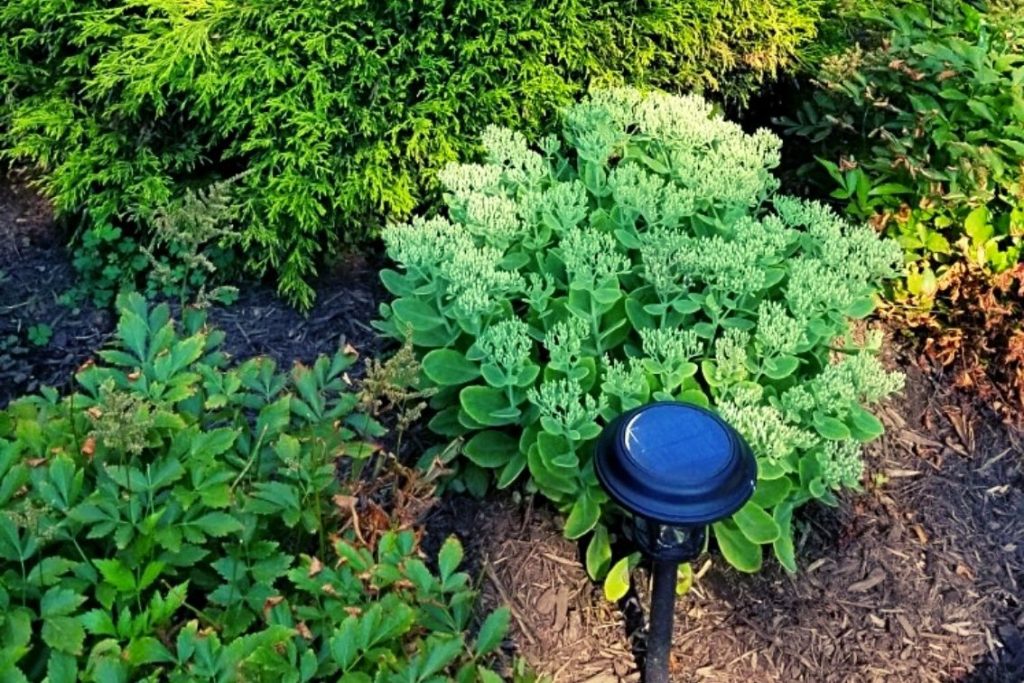
You’ll need to determine at what time of day the sun starts shining on that location and the time of day it stops. Once you know the start and stop time for that spot you can calculate the total hours of direct sunlight for that location.
As long as it is at least 6 hours of total sunlight you could put a solar light in that location and get roughly 4-6 hours of light during the evening.
If you don’t have time to check the start and stop times for each location you could borrow a friend’s solar light or buy just a single light and conduct live tests.
To do that, position the single light in the first location where you’d like to have a solar light and leave it there for a full day. Watch at night to see how long the light stays on.
Repeat the test for all other locations where you’re thinking of using one of these.
It’s All About Positioning
Most homes will have clearings where these can work – a driveway, a garden, the front entrance.
Obviously you can’t put the kind that have the solar panel built into the light right under a tree as the branches will block the panel that collects energy. For those kinds of locations your best bet is to find a solar light where the panel is attached by a cord so you can put the panel in the sun and put the light under the tree.
But, all of those cleared spots you have present a perfect opportunity to save money by using lighting that is powered by the sun.
There are lots of types you can use both for security and for decorative purposes.
On the top of one’s shed you might put up a bright solar security light that comes on when motion is detected while in a garden you might put a solar flower to pretty it up night.
My mother has a side patio she’s surrounded with daisies, clematis, and ferns and if there’s enough sun to keep these plants thriving there’s likely enough sun to put a solar stake with a crackle ball that will glow throughout the evening hours adding ambience to the patio itself.
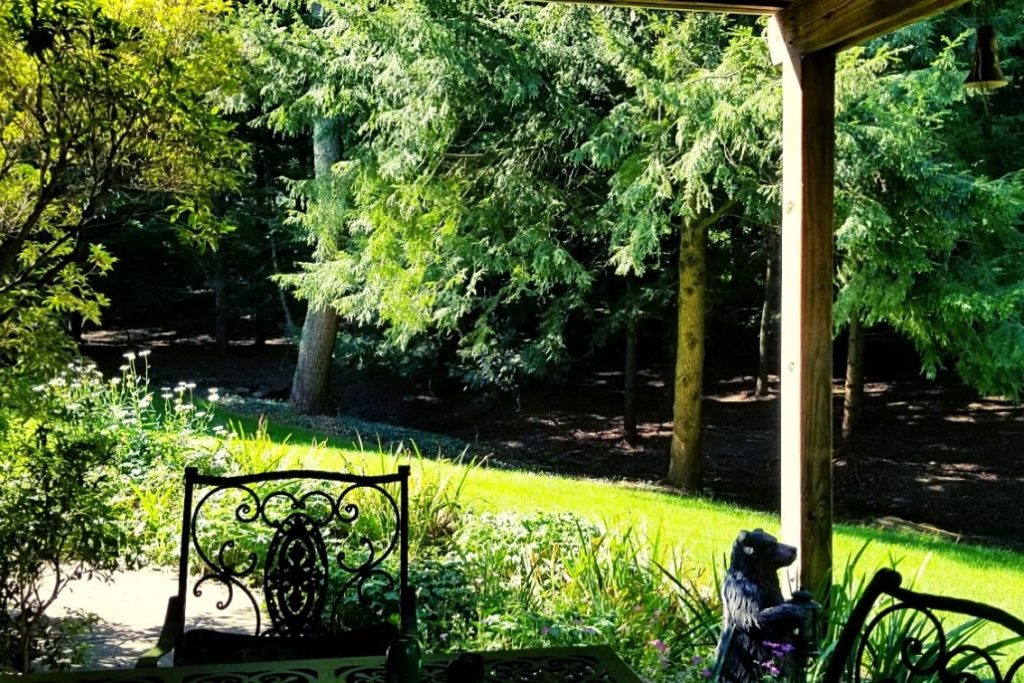
So, the lesson is to plan ahead, run a test to check the hours of sun coverage you have for any spot in your treed yard, and then choose the best option for that particular spot.
